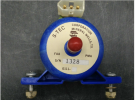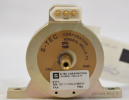Leo Langston
Pre-takeoff checklist
- Joined
- Dec 30, 2016
- Messages
- 112
- Display Name
Display name:
llangston1
Was flying with my CFII to shoot some AP coupled approaches yesterday. While cruising down to the airport we were shooting the approaches we leveled off at 2000’ and engaged the HDG and then the ALT modes. Heading seemed to be steady but the plane immediately pitched over and startied diving. We disconnected the AP, climbed back to 2000 and tried the HDG and ALT again. Same result so we disconnected the AP and didn’t use it again. My avionics shop said the altitude sensor(?) connected to the static line may have water or something in the static line. My Aspen displays worked fine and show no signs of any static line blockages. I did a quick test flight today with similar results. The time when after engaging ALT mode the Plane started climbing and descending like it was searching for the right Altitude. I also tried a VS mode descent of -300 fpm and that did start a reasonable descent. Weather was sketchy with low clouds so I had to cut the test flight short.
Any other 55X users ever have similar problems with their APs? What was the actual problem?
My plane is a Navion with ASPEN 2000 Pro max displays and a GNX 375 GPS/xpndr.
What else should I start checking. The plane goes to the avionics shop in 2 weeks bit I would like to get them any diagnostic info that I can.
Thx
Leo Langston
Any other 55X users ever have similar problems with their APs? What was the actual problem?
My plane is a Navion with ASPEN 2000 Pro max displays and a GNX 375 GPS/xpndr.
What else should I start checking. The plane goes to the avionics shop in 2 weeks bit I would like to get them any diagnostic info that I can.
Thx
Leo Langston


